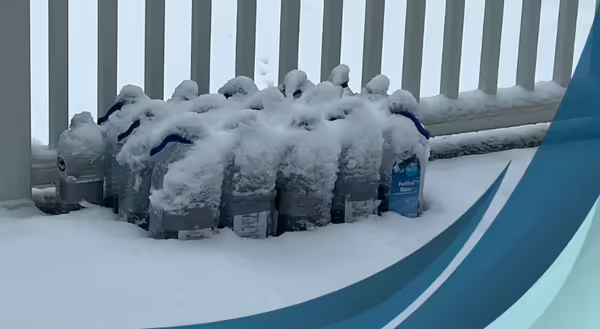
Winter is a time to stow away your gardening tools, put your gardens to bed, pack away your gloves and dream of warmer weather, counting down the days until you can start planting again…or is it? What if I told you that now is the perfect time to not just plan your gardens (especially if you’re thinking about planting natives), but also time to get some seeds going to save some money and take advantage of the cold and snowy weather?
What is winter sowing?
Have you ever wondered how wild plants prevent their seeds from sprouting too early? Or why native plants can be so hard to start from seed? The answer lies in the seed coat. Many seeds of plants native to the Midwest are thick and tough. Tossing them in the dirt with some water won’t have any effect on them. In fact, they can lay dormant in the soil for years without sprouting.
So, what’s the trick? You may have experienced concrete cracking after a wet, cold winter. Water gets into little cracks, then freezes, which causes the water to expand, making those cracks larger. This is like what happens with seeds out in nature. Water gets into the tiny pores of the seed coat. A series of freezing and thawing and refreezing will eventually break it open, finally allowing for germination.
If a gardener is trying to start these plants from seeds, they could just scatter seeds in the area they want those plants to grow and let nature take its course, but there’s a risk that animals would eat the seeds, or the seedlings would be difficult to differentiate from weeds. Winter sowing uses natural temperature fluctuations to mimic this process while also protecting the seeds.
Benefits of winter sowing
As any gardener knows, plugs can get expensive. Starting your own plants from seed is a great way to save some money.
Additionally, it prevents “damping off” that can happen when starting seeds indoors, as well as removing the need to “harden off” seedlings like when seeds are started indoors under gentle conditions.
Process of winter sowing
Tradition suggests beginning your winter sowing on the winter solstice, but it will vary by years. During warmer years, planting later might be better. Winter sowing is essentially creating a mini-greenhouse. Many people like to use gallon milk, water, or juice jugs. The handle makes for a great way to carry them.
Starting about 6 inches from the bottom, cut ¾ of the way around the container so you have a sort of hinge on the side with the handle. Cut some small drainage holes in the bottom, as well, and discard the cap.
Fill with 3” of potting soil and add your seeds. Many different native plants can be winter sown. Look for planting instructions that say things like “requires cold moist stratification." Some garden veggies also can be started, just wait until closer to spring to start them. Make sure to label everything well! Permanent marker isn’t always so permanent outdoors. Nail polish is one option. Tape the jugs closed and set outside where they will be protected from critters, but can still experience the fluctuating temperatures, snow, and rain.
In the spring, as sprouts begin to show, you can open the containers on warmer days. When the second set of true leaves appears, you can remove them for planting. Carefully scoop them out or cut them like a pan of brownies and transplant.
For more information on this topic, watch this video or check out the Four Seasons Gardening webinar Native Seed Starting for Spring Planting.